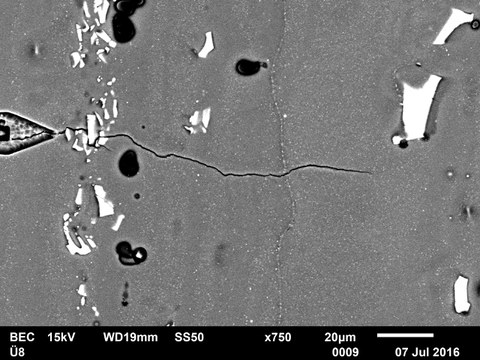Characterization of the very early and very reduced fatigue crack growth in Al-alloys under very low loading conditions
Recent research activities reflect the growing interest in the technologically as well as scientifically relevant problem of the failure of metallic materials applied in structural parts subjected to load regimes well below the classical fatigue limit. Very high cycle fatigue (VHCF) investigations primarily focus on the identification of crack initiation mechanisms, since overall fatigue life is dominated by this phenomenon. However, the key issue of the project submitted is a characterization of the crack growth behavior at very low cyclic stress amplitudes since in practice products are seldom free from flaws or cracks initiated during manufacturing processes or misuse. Although the description of the fatigue crack growth behavior by means of LEFM is formally accepted, drastic discrepancies are expected, which are mainly due to the rather small and by the crystal plasticity influenced plastic zone and its interaction with microstructural features. The effective mechanisms and their influences on the fatigue crack growth will be quantitatively characterized and simulated in the project submitted. The scope of experimental and simulation methods based on the expertise of three workgroups are therefore consolidated with the aim to develop a model-based characterization of the very slow crack growth at very low stress amplitudes. The sum of the outcomes of each individual research focus and the synergistic effect of the cooperation shall result in a coherent understanding of the fatigue crack growth mechanisms relevant for a precipitation hardening and a strain hardening aluminum alloy (each in two different microstructural conditions) allowing a transfer of the insights gained into common engineering practice.


